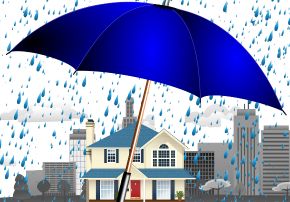MONDAY, JULY 1, 2024
 Firework Safety Tips for July 4th Firework Safety Tips for July 4th
4th of July is a day where we celebrate the thirteen colonies claiming their independence from England and more commonly a day where friends and family gather for food, music and beautiful firework displays across the country. Many of us will also purchase consumer based fireworks to celebrate on our own, however these certainly come with risks.
Did you know that according to the Consumer Product Safety Commission’s 2014 Fireworks Annual Report by Yongling Tu and Demar Granados, fireworks cause a yearly average of 18,500 reported fires and resulted in over $21 million dollars in direct property damage in 2013.
Fireworks are also a leading source of emergency room visits each and every year on the 4th of July. Check out some injuries by the numbers below.
Firework Injuries:
- Sparklers accounted for roughly 28% of all emergency room firework injuries.
- More than 33% of firework injuries are to the hands or fingers.
- Children 5-9 years of age were 2.4 times as likely as the general public to be injured by fireworks.
- Males account for 74% of firework injuries
- Only 6% of firework injuries are caused by public displays
Fireworks cause an average of 18,500 fires per year.
4th of July Safety Tips
Firework Safety:
- Sparklers burn at 1200°F – Don’t point them at yourself or others.
- Never light fireworks in hand; only light fireworks while they are placed on the ground.
- Never attempt to light multiple fireworks at once.
- Never allow young children to handle sparklers.
- Never light any fireworks that appear damaged or torn.
- Don’t take apart fireworks or attempt to make your own.
- Always keep a fire extinguisher and water source nearby in case of emergency.
- Never dispose of used fireworks in trash cans until completely cool.
Grill Safety Tips:
The 4th of July just isn’t the same without sharing some amazing BBQ with your friends and family. Be sure to check for the following before throwing those steaks, burgers and dogs on the grill.
- Always check your grill’s hoses for cracks and leaks.
- Never grill indoors or near surfaces that can catch fire.
- Keep the grill at least two feet away from decks, siding and other surfaces.
We wish everyone a very happy and safe 4th of July celebration.
originally published by Mammoth Restoration http://mammothrestoration.com/
Posted 9:08 PM
SATURDAY, JUNE 1, 2024
 Spotlight on: Dog Bite Liability Spotlight on: Dog Bite Liability
SOURCE: Insurance Information Institute. View original article at iii.org
Overview
About 65 million U.S. households own dogs, according to the American Pet Products Association’s 2023-2024 Pet Owners Survey. The American Veterinary Medical Association states there are nearly 90 million dogs living in U.S. households. About 4.5 million people are bitten by dogs each year, most of them children.
Homeowners and renters insurance policies typically cover dog bite liability legal expenses, up to the liability limits (typically $100,000 to $300,000). If the claim exceeds the limit, the dog owner is responsible for all damages above that amount.
Dog bite liability and homeowners insurance
Some insurance companies will not insure homeowners who own certain breeds of dogs categorized as dangerous, such as pit bulls. Others decide on a case-by-case basis, depending on whether an individual dog, regardless of its breed has been deemed vicious. Some insurers do not ask the breed of a dog owned when writing or renewing homeowners insurance and do not track the breed of dogs involved in dog bite incidents. However, once a dog has bitten someone, it poses an increased risk. In that instance, the insurance company may charge a higher premium, nonrenew the homeowner’s insurance policy or exclude the dog from coverage.
Some insurers are taking steps to limit their exposure to such losses. Some companies require dog owners to sign liability waivers for dog bites, while others charge more for owners of breeds such as pit bulls and Rottweilers and others are not offering insurance to dog owners at all. Some will cover a pet if the owner takes the dog to classes aimed at modifying its behavior or if the dog is restrained with a muzzle, chain or cage.
Homeowners insurance liability claims
· Liability claims related to dog bites and other dog-related injuries cost homeowners insurers $1,116 million in in 2023, according to the Insurance Information Institute (Triple-I) and State Farm®.
· The number of dog bite claims nationwide increased in 2023 to 19,062 from 17,597 in 2022—a 8.3 percent increase, according to an analysis of homeowners insurance claims data by the Triple-I.
· The average cost per claim decreased 9.3 percent in 2023 to $58,545 from $64,555 in 2022. The average cost per claim nationally has risen 82.5 percent from 2014 to 2023, due to increased medical costs as well as the size of settlements, judgments and jury awards given to plaintiffs, which are trending upwards.
· By state, California continues to have the largest number of claims in the United States, at 2,104 in 2023, up from 1,954 in 2022. The state with the second highest number of claims was Florida with 1,532. Illinois had the highest average cost per claim at $73,797, followed by Wyoming with an average cost of $73,324.
State and local legislation
In 29 states, dog owners are liable for injuries their pets cause, with some exceptions such as if the dog was provoked, according to a Triple-I analysis of dog bite laws compiled by the American Property Casualty Insurers Association as of March 2021. In 17 states and the District of Columbia, liability is not automatically granted but attacks are classified as misdemeanors or, in extreme cases, as felonies, with fines. There are no laws for dog bites in four states—Arkansas, Kansas, Mississippi and North Dakota. With regard to insurance, at least two states, Pennsylvania and Michigan, have laws that prohibit insurers from canceling or denying coverage to the owners of particular dog breeds in some policies. Some states could exclude coverage after a dog bite, such as Ohio, which also requires owners of dogs that have been classified as vicious to purchase at least $100,000 of liability insurance. This white paper was presented to the National Association of Insurance Commissioners (NAIC) by animal rights groups in November 2020. It discusses what they see as the discriminatory impact of the insurance industry’s use of dog breed lists to deny homeowner and renters insurance policy sales, to issue policy non-renewals, and to place limitations on coverage.
According to the American Veterinary Medical Association, several states statutorily prohibit breed specific local ordinances.
Despite the COVID-19 pandemic keeping more people at home in 2020 and an increase in home deliveries, the number of dog bite claims in the United States dropped by 4.6 percent from 2019. Additionally, a February 2021 survey from the Insurance Research Council, Consumer Responses to the Pandemic and Implications for Insurance, found that 21 percent of homeowners reported adopting a dog in 2020.
· Dog owners’ liability: There are three kinds of law that impose liability on owners:
1) A dog-bite statute: where the dog owner is automatically liable for any injury or property damage the dog causes without provocation.
2) The one-bite rule: where the dog owner is responsible for an injury caused by a dog if the owner knew the dog was likely to cause that type of injury—in this case, the victim must prove the owner knew the dog was dangerous.
3) Negligence laws: where the dog owner is liable if the injury occurred because the dog owner was unreasonably careless (negligent) in controlling the dog.
· Criminal penalties: Dog owners could be charged with serious crimes if their dogs attack and severely injure people. In a 2002 California case, a woman and her husband were tried for second-degree murder after their Presa Canario dogs attacked and killed a neighbor. The woman was convicted of second-degree murder and her husband was convicted of involuntary manslaughter. This was only the third time that dog owners were tried for murder in the U.S. The first case was in Kansas in 1997.
Charts
Estimated Number and Cost of Dog Bite Claims, 2014-2023 (1)
|
Year
|
Value of claims
($ millions)
|
Number
of claims
|
Average cost
per claim (2)
|
|
2014
|
$530.8
|
16,550
|
$32,072
|
|
2015
|
571.3
|
15,352
|
37,214
|
|
2016
|
602.2
|
18,123
|
33,230
|
|
2017
|
686.3
|
18,522
|
37,051
|
|
2018
|
674.9
|
17,297
|
39,017
|
|
2019
|
796.8
|
17,802
|
44,760
|
|
2020
|
853.7
|
17,597
|
50,245
|
|
2021
|
881.9
|
17,989
|
49,025
|
|
2022
|
1,136.0
|
17,597
|
64,555
|
|
2023
|
1,116.0
|
19,062
|
58,545
|
|
Percent change, 2022-2023
|
-1.8%
|
8.3%
|
-9.3%
|
|
Percent change, 2014-2023
|
110.2%
|
15.2%
|
82.5%
|
|
(1) Includes other dog-related injuries that have impacted claims such as fractures or other blunt force trauma injuries.
(2) Calculated from unrounded data.
Source: Insurance Information Institute, State Farm®.
Top 10 States By Estimated Number and Cost of Dog Bite Claims, 2023 (1)
|
Rank
|
State
|
Number of claims
|
Average cost
per claim (2)
|
Value of claims
($ millions)
|
|
1
|
California
|
2,104
|
$68,125
|
$143.3
|
|
2
|
Florida
|
1,532
|
66,615
|
102.1
|
|
3
|
Texas
|
1,040
|
59,925
|
62.3
|
|
4
|
Michigan
|
932
|
69,168
|
64.5
|
|
5
|
Ohio
|
885
|
39,119
|
34.6
|
|
6
|
Pennsylvania
|
857
|
53,914
|
46.2
|
|
7
|
New York
|
851
|
66,578
|
56.7
|
|
8
|
Illinois
|
837
|
73,797
|
61.8
|
|
9
|
New Jersey
|
649
|
62,295
|
40.4
|
|
10
|
Georgia
|
495
|
57,572
|
28.5
|
|
|
Top 10
|
10,182
|
$62,891
|
$640.4
|
|
|
Other
|
8,880
|
$53,561
|
$475.6
|
|
|
Total United States
|
19,062
|
$58,545
|
$1,116.0
|
|
(1) Includes other dog-related injuries that have impacted claims such as fractures or other blunt force trauma injuries.
(2) Calculated from unrounded data.
Source: Insurance Information Institute, State Farm®.
Number of U.S. Households That Own a Pet, by Type of Animal
(millions)
|
Pet
|
Number
|
|
Dog
|
65.1
|
|
Cat
|
46.5
|
|
Freshwater fish
|
11.1
|
|
Small animal
|
6.7
|
|
Bird
|
6.1
|
|
Reptile
|
6.0
|
|
Horse
|
2.2
|
|
Saltwater fish
|
2.2
|
|
Source: American Pet Products Association's 2023-2024 National Pet Owners Survey.
Posted 12:19 PM
WEDNESDAY, MAY 1, 2024

Here are a few tips to help you protect your home while you're away.
Step 1: Find Someone To Check In
The first and most important thing is to have someone you know and trust check your home regularly. Start looking for this person as soon as your travel is scheduled. This isn’t something to scramble for at the last minute.
Make sure the home is checked at least once every few days. If the person can stay in your house, even better!
Have your mail/newspapers collected (a neighbor can do this too if your check in person can’t make it every day)
Arrange checks for leaks or other maintenance issues.
Bring a gift for the caretaker! Checking in on a property is a lot of work; they will appreciate the thanks.
Step 2: Travel-Proof Your Home
Go down this list before you leave.
- Connect a few lights to a timer and set them to go on every day after dark. This will keep your house from being totally dark – a sure giveaway that no one is home.
- Don’t close all your blinds and shutters, unless this is something you normally do.
- Don't post your out of town status on social media.
- As you’re walking out of the house, follow these steps to cover your last-minute safety needs.
- Don't turn the heat down below 55 degrees. Never turn the heat completely off during the winter; if the temperature drops, you risk frozen pipes.
- Lock the house. That includes pet doors, garage doors, and windows that might normally be left open.
- Throw away any perishables if you’re going to be gone more than 3 days or so. You don’t want to come home to a rotting mess in the fridge!
--Content used in this post was originally published by Mammoth Restoration & Construction and is used with their permission.
Posted 12:59 PM
MONDAY, APRIL 1, 2024
 WHAT IS AN UMBRELLA POLICY? WHAT IS AN UMBRELLA POLICY?
Your home, auto, farm or business policies cover you for certain risks and specific limits. But sometimes you might need more coverage than these policies can provide. An Umbrella policy is designed to protect you against a catastrophic lawsuit or judgment. It provides an additional layer of coverage over and above the liability coverage found in your home, auto, farm, or business liability policies.
WHY DO I NEED AN UMBRELLA POLICY?
An Umbrella policy can help to protect you from a potential financial catastrophe. In today’s litigious society, it’s not uncommon to hear about very large jury awards. An Umbrella policy can help to protect the assets that you’ve worked hard for and accumulated over the years. Review the liability limits listed in your home, auto, farm, or business policies – if a large judgment was awarded against you, how would you pay it?
WHAT DOES AN UMBRELLA LIABILITY POLICY COVER?
An Umbrella liability policy covers you and your family or your business for most bodily injury, property damage and personal injury losses. Defense coverage is available for defending claims and suits if coverage applies. Defense costs are paid in addition to the policy limit. Limits of $1 million, or more, are available if you qualify. No matter where you travel, your Umbrella liability policy is with you. It covers you anywhere in the world. We offer Personal, Farm, and Commercial Umbrella Liability policies. Talk with your agent to learn more about Goodville Mutual’s Umbrella liability policy options. We developed these questions and answers to help you think about how an Umbrella policy might be valuable to you. We recommend that you seek professional advice from your attorney or accountant as it applies to your specific legal and financial needs.
Posted 2:50 PM
FRIDAY, MARCH 1, 2024
 Each year, construction related accidents in this country result in approximately 150,000 injuries and more than 1,000 deaths. If your employee has been injured in a work-related accident you may have many questions about how a Workers Compensation Claim is handled, how rates are determined, and how payments are calculated. If our agency has placed your Workers Compensation Coverage, we have WC Specialist to guide you through that process, but the best Workers Compensation Claims advice is prevention. The employer, employee, and insurance company are all in agreement that preventing the claim is in everyone's interest. Each year, construction related accidents in this country result in approximately 150,000 injuries and more than 1,000 deaths. If your employee has been injured in a work-related accident you may have many questions about how a Workers Compensation Claim is handled, how rates are determined, and how payments are calculated. If our agency has placed your Workers Compensation Coverage, we have WC Specialist to guide you through that process, but the best Workers Compensation Claims advice is prevention. The employer, employee, and insurance company are all in agreement that preventing the claim is in everyone's interest.
We ask that you please review this resource to learn about common reasons injuries occur, construction site rules and regulations, suggested dress code and safety equipment, common areas/incidences of risk, and a safety checklist.
This year and every year, we wish you and your work family a safe, healthy, and prosperous year.
Posted 6:00 AM
|
Blog Archive
2024
2023
2022
2020
2019
2018
2017
2016
|